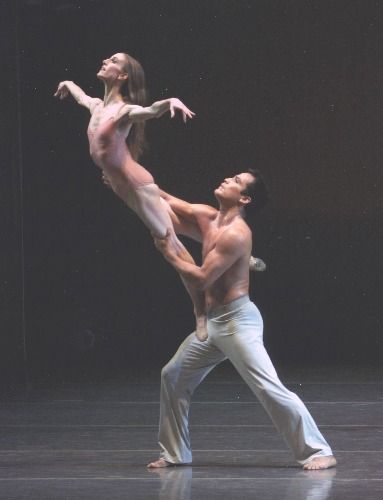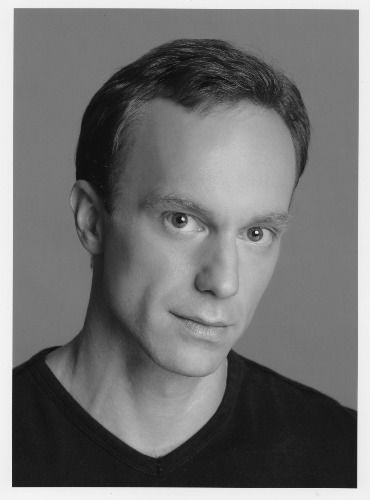Christo and Jeanne-Claude: The Gates, Central Park, New York, 1979-2005 / February 12-27, 2005
The Gates, which I wrote about last week, will begin its vanishing act on Monday (February 27). This weekend offers a last chance to visit Christo and Jeanne-Claude’s installation—for the first time or once more. Following are a few of the observations I’ve received from AJ readers.
On the opening Saturday I spent about two hours walking uphill and downhill, sitting, musing, and wandering “aimlessly” in and around the central “third” of the park, listening at the same time to the Metropolitan Opera’s live broadcast of Mozart’s Marriage of Figaro. The experience was exquisite, exhilarating. Sunday I spent another hour down on the first “third” of the park, with no music and far too many people, just hordes . This trip was nice enough, but over-“civilized.” It reminded me of visiting the World’s Fair grounds when I was a kid. Another day, at the top of the park: snow, ponds, ducks, waterfalls, woods, Telemann and Bach. Glorioso! In his appreciation of The Gates in the New York Times, Michael Kimmelman wrote, “Art is never necessary. Art is merely indispensable.” Whether The Gates is “art,” Art, or whatever, matters only to those who like neat pigeonholes and hierarchical thinking. At its best, it certainly provides an aesthetic experience. Best to me is when there are clusters of gates, winding and crossing pathways, flying skirts, moving people, and great music in my ears. —Jane Remer
The Gates reminds me of how marvelous it is to be a “bodied” species (unlike the floating minds on Star Trek). Dance-minded people simply experience the world with a unique set of faculties, as your piece points out. Children demonstrate this when they use their own form as a measurement device. Watch them walk down the stairs and you will often see their hand stroking the wall. Line them up and witness their urge to bump into the person in front of them and the one behind them. Physical contact with objects tells them where they end and the world begins. Sounds like your granddaughter enjoyed The Gates with an eye for the fact that it’s her body that makes the project fun. —Nancy Galeota-Wozny
I went up to the park Sunday night at eleven o’clock and walked for two hours through the falling snow and swirling winds, till my feet were too cold and wet to continue. I let myself get completely lost—dogged, plodding, enchanted. I don’t know the park well, and I’m not at all sure where I went. I saw the bronze poets, with snow heaped up on their shoulders, and the shuttered Delacorte Theater, and a sort of rustic chalet. I wound west and east and up and down from Columbus Circle to East 72nd and then finally over near the Museum of Natural History, and back down again to Mr. Columbus, moored in his barren plaza.
The Gates reveals a whole side of itself at night, and in the snow, that I didn’t see on the crowded weekend mornings when I visited it before. The particular choice of color suddenly makes even more sense than it does when read by day against the dun and gray of the February trees and earth. The street lights cast a pale orange glow, and, as it spills onto the falling and fallen snow, the light appears to emerge and spread out from the gates themselves. And the lanterns around Tavern on the Green are exactly the color of the fabric, magically condensed. The snow and wind make wonderful noises on the fabric. The snow was falling so thickly that it had time to build up a little on the gates’ wildly flapping skirts sometimes; then, when the wind suddenly died down, the snow would slide off all at once with a dry little swoosh.
There were other people out too—few, but some—doing the same thing I was doing. Couples, gay and straight, walking arm in arm or hand in mittened hand. A stocky guy with a big camera wrapped in plastic, leaning against a gate leg to steady his cold hands for a long exposure. Little groups of friends. People playing with a dog that raced in circles, spraying snow up behind his heels. Boys on bicycles. A lady with bright green hair who smiled and said, “Aren’t we lucky?” A stoned girl frantically trying to relight her pot pipe with a lighter, who asked, “Do you have any matches?” and then, “So would you call this performance art or conceptual art?”
The gates make you want to just walk and walk and not stop. To me, they look as though they’re walking themselves, striding through the park on their spindly orange legs, with their perfectly pleated skirts fluttering and flapping, and stomping around in circles with their gray, pachydermal iron feet. I loved the way the snow built up on every horizontal surface they offered, down to the tiny self-locking nuts near the bases.
The snow piled up on me too. By the time I left the park, my clothes were crusted all over. Descending into the subway to ride home, I realized that miniature snowdrifts had accumulated on my beard and eyebrows too, as I felt the snow begin to melt, cold water flowing down over my eyes and cheeks and chin. —Christopher Caines





 showings. Only the dead know Brooklyn? The idea is suited to this would-be noir-ish show, inspired, Lock says in interviews, by his memories of a transvestite he visited as an adolescent. Lock also claims that Amelia tackles the issue of “gender politics,” but that’s just wishful thinking. Shakespeare evokes the effect I believe Lock is actually laboring to produce: “O comfort-killing night, image of hell, / Dim register and notary of shame, / Black stage for tragedies and murders fell, / Vast sin-concealing chaos, nurse of blame! (The Rape of Lucrece). The choreographer, like so many of his peers, falls short because he gets sidetracked by the allure of surface appearances.
showings. Only the dead know Brooklyn? The idea is suited to this would-be noir-ish show, inspired, Lock says in interviews, by his memories of a transvestite he visited as an adolescent. Lock also claims that Amelia tackles the issue of “gender politics,” but that’s just wishful thinking. Shakespeare evokes the effect I believe Lock is actually laboring to produce: “O comfort-killing night, image of hell, / Dim register and notary of shame, / Black stage for tragedies and murders fell, / Vast sin-concealing chaos, nurse of blame! (The Rape of Lucrece). The choreographer, like so many of his peers, falls short because he gets sidetracked by the allure of surface appearances.
